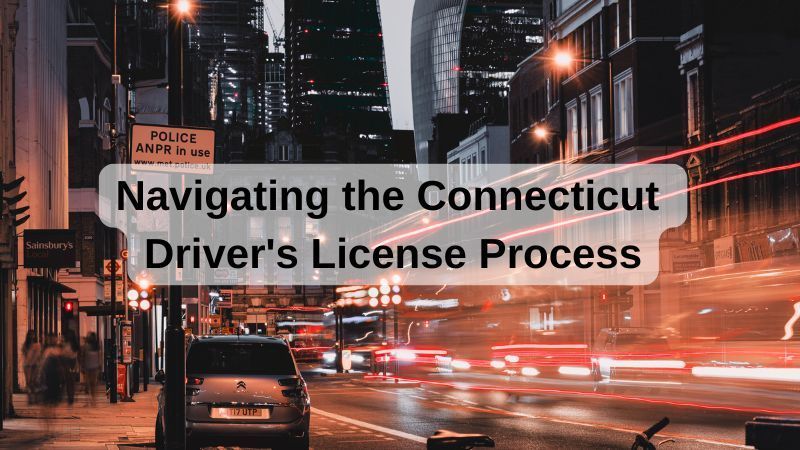Navigating the Connecticut Driver's License Process

Welcome to Smooth Move & Delivery's comprehensive guide on obtaining a Connecticut driver's license. Whether you're new to the state, a first-time driver, or transferring your license, navigating the rules and requirements can be complex. This guide will simplify the process, making your transition smooth and stress-free. Let's dive in!
Types of Driver's Licenses in Connecticut
Connecticut offers several types of driver's licenses to accommodate different needs. These include:
- Standard Driver's License: This is the most common type and allows you to operate most standard vehicles.
- Commercial Driver's License (CDL): Required for those driving commercial vehicles like trucks and buses.
- Motorcycle Endorsement: Added to your standard license if you plan to operate a motorcycle.
Each type has specific requirements and restrictions designed to ensure safety and compliance with state laws.
Eligibility Requirements
Before you can get a driver's license in Connecticut, you need to meet the following criteria:
- Age Requirements: You must be at least 16 years old. For a commercial license, you must be 18 years old, or 21 if you plan to drive across state lines.
- Residency Requirements: You must provide proof of Connecticut residency. Acceptable documents include utility bills, lease agreements, or mortgage statements.
- Documentation Needed: Bring original documents to prove your identity, residency, and legal presence in the U.S. Examples of acceptable documents include a U.S. passport, birth certificate, Social Security card, or a green card.
Meeting these requirements is the first step towards obtaining your Connecticut driver's license.
Getting a Driver's License for the First Time
Step-by-Step Guide for New Drivers
Getting a driver's license for the first time in Connecticut involves several steps. Here's a detailed breakdown:
- Obtain a Learner’s Permit:
- Age Requirement: Must be at least 16 years old.
- Documents Needed: Proof of identity, Social Security number, and Connecticut residency.
- Application Process: Visit a DMV office to fill out an application, pass a vision test, and take the written knowledge test.
- Complete Driver’s Education:
- Required Courses: New drivers under 18 must complete 30 hours of classroom training and 8 hours of behind-the-wheel training.
- Approved Schools: Ensure the driving school is state-approved.
- Practice Driving:
- Permit Restrictions: You must drive with a licensed adult over 20 who has held a license for at least four years and has no suspensions.
- Duration: Hold the learner's permit for at least 120 days if you complete driver's ed, or 180 days without it.
- Schedule the Road Test:
- Booking: Schedule your road test appointment online or in person at the DMV.
- Vehicle Requirements: Ensure the vehicle is registered and in good working condition.
- Get Your Driver’s License:
- Provisional License: For drivers under 18, restrictions apply for the first 6 months, such as no passengers other than immediate family without a supervising driver.
Driver's Education
Driver’s education is mandatory for new drivers under 18 in Connecticut. Here's what you need to know:
- Mandatory Courses: 30 hours of classroom training covering traffic laws, safety procedures, and basic vehicle operations.
- Behind-the-Wheel Training: 8 hours of practical driving experience with a certified instructor.
- Parent/Guardian Involvement: Parents or guardians must attend two hours of training about teen driving laws and risk factors if the student is under 18.
Choosing a state-approved driving school ensures you meet all legal requirements and gain the knowledge and skills needed to drive safely.
Learner's Permit Specifics
When you have a learner's permit in Connecticut, certain restrictions apply:
- Supervision: You must drive with a qualified licensed adult.
- Curfews: No driving between 11 p.m. and 5 a.m. unless for school or work.
- Passenger Restrictions: No passengers except for a parent, guardian, or qualified instructor.
The learner's permit is a critical step that helps you gain the experience needed to become a safe and confident driver.
For Transferring Drivers
Transferring an Out-of-State License
If you're moving to Connecticut and have an out-of-state driver's license, here's how to transfer it:
- Visit the DMV: Schedule an appointment online before visiting.
- Required Documents: Bring your current out-of-state license, proof of identity, Social Security number, and Connecticut residency.
- Vision Test: You may need to pass a vision test at the DMV.
- No Tests Required: Typically, no written or road tests are required if your out-of-state license is valid and in good standing.
International Drivers
For international drivers, Connecticut allows you to drive with a valid foreign license for a certain period:
- Validity: Generally valid for up to one year from your date of entry.
- Translation: If your license is not in English, you need to carry an International Driving Permit (IDP) or a translation.
- Conversion Process: To convert to a Connecticut license, follow similar steps as the out-of-state license transfer, but additional documentation (like a visa or I-94 form) may be required.
The Testing Phase
Written Knowledge Test
The written knowledge test checks your understanding of road signs, traffic laws, and safe driving practices:
- Format: Multiple-choice questions.
- Study Materials: Connecticut Driver’s Manual, online practice tests, and study guides.
- Common Mistakes: Not fully understanding traffic signs, right-of-way rules, and safe driving practices.
Road Skills Test
The road skills test evaluates your practical driving skills:
- Pre-Test Vehicle Check: Ensure the vehicle is safe to drive — check lights, signals, and brakes.
- Test Manoeuvres: Includes parallel parking, turns, stops, lane changes, and following traffic laws.
- Preparation: Practice regularly, particularly in areas where you are less confident.
After Receiving Your License
Driving Privileges and Restrictions
For new drivers under 18:
- First 6 Months: No passengers aside from a driving instructor or parent/guardian.
- Next 6 Months: Immediate family members only.
- Full License: After one year, restrictions are lifted.
Maintaining Your License
To ensure your license remains in good standing:
- Renewal: Every 6 years. Paperwork can be submitted online or in person, but an in-person visit is required every other renewal cycle.
- Address Changes: Must be updated with the DMV within 48 hours of moving.
- Lost or Stolen License: Report to the DMV as soon as possible and apply for a duplicate.
Wrapping Up: Smooth Move to Connecticut
Obtaining a Connecticut driver’s license is a structured but manageable process. Remember to gather all required documents, prepare thoroughly for tests, and adhere to driving restrictions:
- Start early with your preparations, especially for the learner's permit and driving tests.
- Use the Connecticut Driver’s Manual and online practice tests for better preparation.
- Follow all provisional restrictions closely to avoid penalties.
With this guide, Smooth Move & Delivery aims to make your transition to Connecticut seamless and stress-free, starting with obtaining your driver’s license. Safe driving!

